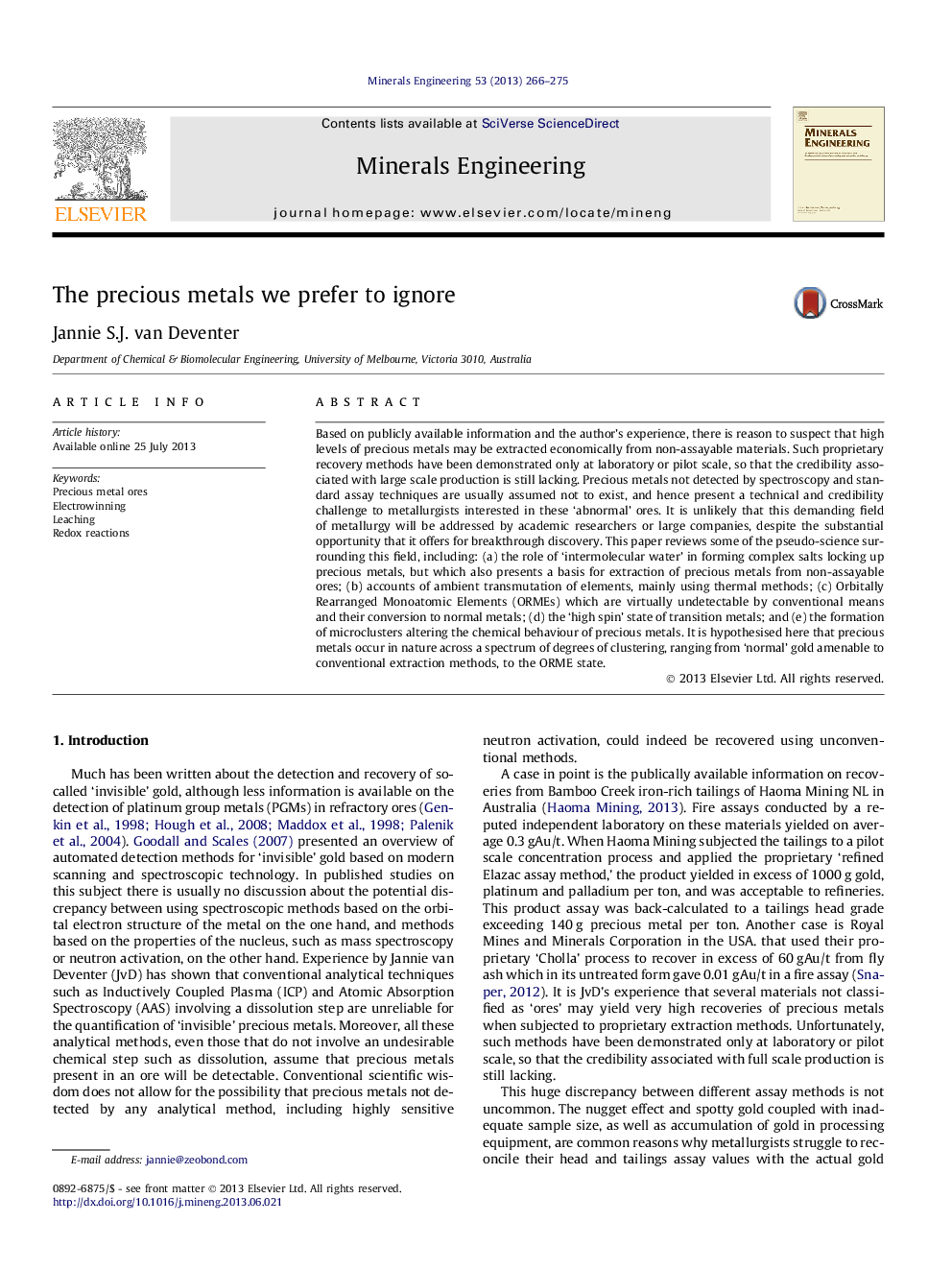| Article ID | Journal | Published Year | Pages | File Type |
|---|---|---|---|---|
| 233400 | Minerals Engineering | 2013 | 10 Pages |
•Unconventional theories may explain the recovery of gold from non-assayable ores.•Analysis of precious metals from some ores by fire assay/spectroscopy is unreliable.•Precious metals in ores reveal a range of clustering from monoatomic to metallic.•Partially clustered gold may be recovered at the anode during electrowinning.•Non-assayable ores require scientific rigour combined with an open mind.
Based on publicly available information and the author’s experience, there is reason to suspect that high levels of precious metals may be extracted economically from non-assayable materials. Such proprietary recovery methods have been demonstrated only at laboratory or pilot scale, so that the credibility associated with large scale production is still lacking. Precious metals not detected by spectroscopy and standard assay techniques are usually assumed not to exist, and hence present a technical and credibility challenge to metallurgists interested in these ‘abnormal’ ores. It is unlikely that this demanding field of metallurgy will be addressed by academic researchers or large companies, despite the substantial opportunity that it offers for breakthrough discovery. This paper reviews some of the pseudo-science surrounding this field, including: (a) the role of ‘intermolecular water’ in forming complex salts locking up precious metals, but which also presents a basis for extraction of precious metals from non-assayable ores; (b) accounts of ambient transmutation of elements, mainly using thermal methods; (c) Orbitally Rearranged Monoatomic Elements (ORMEs) which are virtually undetectable by conventional means and their conversion to normal metals; (d) the ‘high spin’ state of transition metals; and (e) the formation of microclusters altering the chemical behaviour of precious metals. It is hypothesised here that precious metals occur in nature across a spectrum of degrees of clustering, ranging from ‘normal’ gold amenable to conventional extraction methods, to the ORME state.
